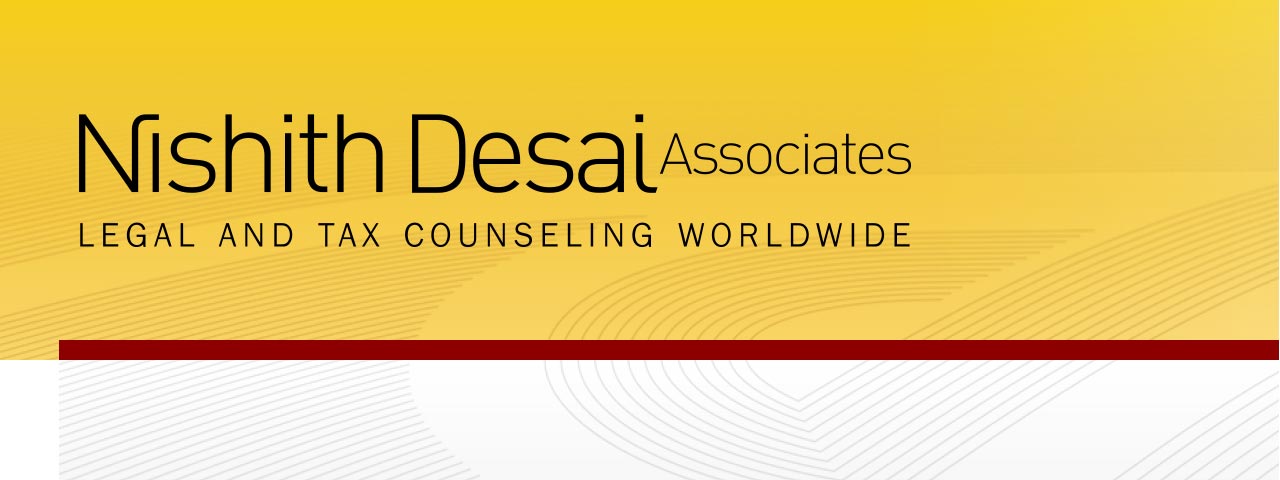Tax Hotline
January 10, 2023
Delhi ITAT Breaks The Tie In Taxpayer’s Favour
SynopsisRecently, the Delhi Income Tax Appellate Tribunal (“ITAT”) in Sameer Malhotra v. ACIT1, held that Sameer Malhotra’s (“Taxpayer”) income earned in Singapore in the financial year (“FY”) 2014-15 cannot be subject to tax in India in accordance with the India-Singapore Double Taxation Avoidance Agreement (“DTAA”), as the Taxpayer is considered to be a resident of Singapore for the relevant FY. Factual BackgroundThe Taxpayer is an individual who declared a total income of Rs.1,59,36,999/- from DBOI Global Services Pvt. Ltd. in India between April 1, 2014 to November 25, 2014 (“Earlier Period”) and from J.P. Morgan Chase & Co. (“JPMC”) in Singapore during December 15, 2014 to March 31, 2015 (“Latter Period”). The Taxpayer thereafter field a revised return and declared his total income to be Rs.47,82,630/-, claiming that he was not an Indian resident for the relevant FY and accordingly, the income earned in Singapore via JPMC was not subject to tax in India. In the resultant scrutiny assessment, the assessing officer (“AO”) rejected the claim of the Taxpayer in the revised return. The AO held that the Taxpayer is a resident of India for the purpose of the Income-tax Act, 1961 (“ITA”) as he was physically present in India for 182 days or more in the relevant FY. For the purpose of the DTAA, the AO relied upon the tie breaker questionnaire and held that the Taxpayer should be considered as tax resident of India. The Commissioner of Income Tax (Appeals) (“CIT(A)”) agreed with the AO’s order, and further observed that the Taxpayer is an Indian resident in the terms of Article 4 of the DTAA, as his permanent home was available to him in India. Additionally, it was observed that Taxpayer’s centre for vital interest rested in India in light of his majority investments and bank accounts being present in India. Thereby, Taxpayer was held to be an Indian resident even in the terms of the tie breaker test under Article 4 of the India-Singapore DTAA. Aggrieved by the order, the Taxpayer preferred an appeal before the ITAT. ITAT Delhi ProceedingsThe ITAT had to determine the sole issue of taxability of Taxpayer’s income earned in the Latter Period, thereby prompting the determination of tax residence of Taxpayer for the relevant FY. Arguments of Taxpayer
Arguments of Revenue
Ruling of ITAT The ITAT held that the Taxpayer qualified as a tax resident of Singapore for the relevant FY in terms of Article 4 of the DTAA. In coming to the decision, the Tribunal observed the following:
NDA ViewsThe issue of dual residency is becoming common with the increase in frequent travels and work in cross border locations. The ITA provides that the global income of a resident is subject to tax in India. Therefore, from an individuals’ perspective, determination of residency (which is a factual exercise) is important prior to filing of income-tax returns. In cases where an individual becomes a tax resident of two countries, tax treaties provide for a tie-breaker test on basis of which preference of residency of one country is established over the other. Tie-breaker test is applied in a hierarchal manner. While determination of tax residency under the domestic law is purely based on number of days an individual stays in India, in case of applicability of tie-breaker test under a tax treaty, a number of facts are taken into consideration to determine the tax residency. Hence, it is important that the taxpayers arrange their affairs as per sound advice and keep the relevant documentation in place. The ITAT’s ruling was guided by following favourable facts for the Taxpayer:
The OECD commentary (“Commentary”) notes that permanent home test under the tax treaty will frequently be sufficient to solve the tie breaker test.2 Further, the Commentary also notes that a house owned by an individual cannot be considered to be available to him if it has been rented out to an unrelated party i.e. the individual no longer has the possession of the house and the possibility to stay there3. The Tribunal also takes note of the UN Model Commentary to elaborate the concept of home. The Tribunal noted that the house owned by the Taxpayer in India was rented out by him once he moved outside India. As per the Commentary, on basis of the aforesaid fact the permanent home test would have broken in favour of the Taxpayer. However, the Tribunal has not given a specific finding with respect to the permanence home test but has determined the residency on basis of the centre of vital interest test and habitual abode test. On basis of the above, it is amply clear that the Tribunal closely looked at the facts of the case while holding in favour of the Taxpayer. Further, the Tribunal also made a reference to the UN Model Commentary noting that special rules under the tie-breaker test should apply to the period where the residence of the taxpayer affects tax liability, and not necessarily the entire taxable period. Hence, even though the favourable facts for the Taxpayer were applicable for the Latter Period only, there were sufficient to break tie in his favour.
(The authors would like to acknowledge and thank Anirudh Srinivasan (student, Nirma University, Ahmedabad) for his contribution to this hotline.) You can direct your queries or comments to the authors 1 ITA No. 4040/Del/2019. 2 Para 11 of Article 4 of the OECD Model Commentary, 2017. 3 Para 13 of Article 4 of the OECD Model Commentary, 2017. Chambers and Partners Asia-Pacific: Band 1 for Employment, Lifesciences, Tax and TMT, 2022 AsiaLaw Asia-Pacific Guide 2022: Ranked ‘Outstanding’ for Media & Entertainment, Technology & Communications, Labor & Employment, Regulatory, Private Equity, Tax Who's Who Legal: Thought Leaders India 2022: Nishith M Desai (Corporate Tax - Advisory, Corporate Tax - Controversy and Private Funds – Formation), Vikram Shroff (Labour & Employment and Pensions & Benefits) and Vyapak Desai (Arbitration) Benchmark Litigation Asia-Pacific: Tier 1 for Tax, Labour and Employment, International Arbitration, Government and Regulatory, 2021 Legal500 Asia-Pacific: Tier 1 for Tax, Data Protection, Labour and Employment, Private Equity and Investment Funds, 2021 IFLR1000: Tier 1 for Private Equity and Tier 2 for Project Development: Telecommunications Networks, 2021 FT Innovative Lawyers Asia Pacific 2019 Awards: NDA ranked 2nd in the Most Innovative Law Firm category (Asia-Pacific Headquartered) RSG-Financial Times: India’s Most Innovative Law Firm 2019, 2017, 2016, 2015, 2014 DisclaimerThe contents of this hotline should not be construed as legal opinion. View detailed disclaimer. |
|

-
The facts to which special rules with respect to tie breaker test are applicable need not to be applicable for the whole financial year
-
Tie-breaker questionnaire cannot be exclusively taken not consideration for determination of residency
-
The permanence of home can be determined on qualitative and quantitative basis
-
Habitual abode does not mean the place of permanent residence, but in fact it means the place where one normally resides
Synopsis
Recently, the Delhi Income Tax Appellate Tribunal (“ITAT”) in Sameer Malhotra v. ACIT1, held that Sameer Malhotra’s (“Taxpayer”) income earned in Singapore in the financial year (“FY”) 2014-15 cannot be subject to tax in India in accordance with the India-Singapore Double Taxation Avoidance Agreement (“DTAA”), as the Taxpayer is considered to be a resident of Singapore for the relevant FY.
Factual Background
The Taxpayer is an individual who declared a total income of Rs.1,59,36,999/- from DBOI Global Services Pvt. Ltd. in India between April 1, 2014 to November 25, 2014 (“Earlier Period”) and from J.P. Morgan Chase & Co. (“JPMC”) in Singapore during December 15, 2014 to March 31, 2015 (“Latter Period”). The Taxpayer thereafter field a revised return and declared his total income to be Rs.47,82,630/-, claiming that he was not an Indian resident for the relevant FY and accordingly, the income earned in Singapore via JPMC was not subject to tax in India.
In the resultant scrutiny assessment, the assessing officer (“AO”) rejected the claim of the Taxpayer in the revised return. The AO held that the Taxpayer is a resident of India for the purpose of the Income-tax Act, 1961 (“ITA”) as he was physically present in India for 182 days or more in the relevant FY. For the purpose of the DTAA, the AO relied upon the tie breaker questionnaire and held that the Taxpayer should be considered as tax resident of India. The Commissioner of Income Tax (Appeals) (“CIT(A)”) agreed with the AO’s order, and further observed that the Taxpayer is an Indian resident in the terms of Article 4 of the DTAA, as his permanent home was available to him in India. Additionally, it was observed that Taxpayer’s centre for vital interest rested in India in light of his majority investments and bank accounts being present in India. Thereby, Taxpayer was held to be an Indian resident even in the terms of the tie breaker test under Article 4 of the India-Singapore DTAA.
Aggrieved by the order, the Taxpayer preferred an appeal before the ITAT.
ITAT Delhi Proceedings
The ITAT had to determine the sole issue of taxability of Taxpayer’s income earned in the Latter Period, thereby prompting the determination of tax residence of Taxpayer for the relevant FY.
Arguments of Taxpayer
-
The Taxpayer submitted that he qualified as a resident of both Singapore and India as per the respective domestic laws, thereby evoking the determination of residence on the basis of ‘tie breaker test’ under Article 4(2) of the DTAA.
-
In terms of the permanent home test under Article 4(2), the Taxpayer argued that he had a home available to him in Singapore in the Latter Period, while the home in India was rented out for the duration of the Latter Period making it not available to him. Thereby, Taxpayer should qualify as a tax resident of Singapore on the basis of the permanent home test.
-
Even otherwise, with regards to the determination of center for vital interests, the Taxpayer claimed that he had shifted to Singapore with his family members, along with having employment and earnings therein. Hence, his centre of vital interest should be considered to be in Singapore.
-
The Taxpayer’s claim for residency was further buttressed by producing the tax residency certificate (“TRC”) issued by the Singapore tax authorities for the relevant calendar year.
-
Thereby, the Taxpayer argued that he should qualify as a tax resident of Singapore for the relevant FY.
Arguments of Revenue
-
The revenue department’s representative (“DR”) placed reliance on the tie-breaker questionnaire filled in by the Taxpayer, pointing that with respect to owning home, personal belongings such as automobiles, majority of savings, investments and personal bank accounts, the Taxpayer has said that all of them were located in India.
-
Further, as its not in dispute that the Taxpayer stayed in India for more than 182 days under the relevant FY, hence, the Taxpayer being a resident of India is liable to tax in India on his global income i.e. including income earned by the Taxpayer in Singapore.
Ruling of ITAT
The ITAT held that the Taxpayer qualified as a tax resident of Singapore for the relevant FY in terms of Article 4 of the DTAA. In coming to the decision, the Tribunal observed the following:
-
AO and CIT(A) considered the Taxpayer as a resident of India as he spent more than 182 days in India in the relevant FY and even the ‘permanent home’ of the Taxpayer was in India.
-
The Taxpayer shifted with his family to Singapore, stayed there for the whole period remaining in the relevant FY and earned the income while serving in Singapore itself.
-
The Taxpayer had an apartment on rent in Singapore, obtained Singapore Driving License and Overseas Bank Account, showed Singapore as his country of residence in various official forms and even paid taxes in Singapore while working from there.
-
With respect to the tie breaker test:
-
Permanent Home: Although the Taxpayer did mention in the tie breaker questionnaire that he owned a home in India, however, tie breaker questionnaire cannot be exclusively taken into consideration as a base for deciding the residency. The permanence of home can be determined on qualitative and quantitative basis. Further, the Taxpayer did not have the house in India available to him during the Latter Period as it was rented out by him.
-
Centre of Vital Interest Test: The CIT(A) held that even the centre of vital interest of the Taxpayer was in India only and not in Singapore, as the majority of the savings, investments and personal bank accounts are in India. However, the Taxpayer worked in Singapore during the period under consideration and stayed therein only along with his family for the purpose of earning income. Thereby, the ITAT held that Taxpayer’s personal and economic relations remained in Singapore only.
-
Habitual Abode: The ITAT observed that habitual abode does not mean the place of permanent residence, but in fact it means the place where one normally resides. Given that Taxpayer had an apartment on rent in Singapore and he resided therein only, he had a habitual abode in Singapore.
-
-
Based on the above, the Taxpayer was held to be a tax resident of Singapore. Accordingly, as per Article 15(1) of the India Singapore DTAA, which states that remuneration derived by a resident of a contracting state in respect of an employment shall be taxable only in that State unless the employment is exercised in the other contracting state, the Taxpayer’s income earned in Singapore was not held to be taxable in India.
NDA Views
The issue of dual residency is becoming common with the increase in frequent travels and work in cross border locations. The ITA provides that the global income of a resident is subject to tax in India. Therefore, from an individuals’ perspective, determination of residency (which is a factual exercise) is important prior to filing of income-tax returns.
In cases where an individual becomes a tax resident of two countries, tax treaties provide for a tie-breaker test on basis of which preference of residency of one country is established over the other. Tie-breaker test is applied in a hierarchal manner. While determination of tax residency under the domestic law is purely based on number of days an individual stays in India, in case of applicability of tie-breaker test under a tax treaty, a number of facts are taken into consideration to determine the tax residency. Hence, it is important that the taxpayers arrange their affairs as per sound advice and keep the relevant documentation in place. The ITAT’s ruling was guided by following favourable facts for the Taxpayer:
-
The home in India although continued to be owned by the Taxpayer, it was rented out by him making it ‘not available’ to him.
-
Taxpayer obtained the tax residency certificate (“TRC”) from the Singapore authorities for the relevant period. Further, the ITAT also noted that the AO and CIT(A) did not doubt the TRC.
-
The Taxpayer’s family also moving with him outside India was an important factor with respect to determination of centre of vital interest. Additional factors in favour of Taxpayer in this regards were existence of employment, having savings, obtaining driving license, and overseas bank account in Singapore.
The OECD commentary (“Commentary”) notes that permanent home test under the tax treaty will frequently be sufficient to solve the tie breaker test.2 Further, the Commentary also notes that a house owned by an individual cannot be considered to be available to him if it has been rented out to an unrelated party i.e. the individual no longer has the possession of the house and the possibility to stay there3. The Tribunal also takes note of the UN Model Commentary to elaborate the concept of home. The Tribunal noted that the house owned by the Taxpayer in India was rented out by him once he moved outside India. As per the Commentary, on basis of the aforesaid fact the permanent home test would have broken in favour of the Taxpayer. However, the Tribunal has not given a specific finding with respect to the permanence home test but has determined the residency on basis of the centre of vital interest test and habitual abode test.
On basis of the above, it is amply clear that the Tribunal closely looked at the facts of the case while holding in favour of the Taxpayer. Further, the Tribunal also made a reference to the UN Model Commentary noting that special rules under the tie-breaker test should apply to the period where the residence of the taxpayer affects tax liability, and not necessarily the entire taxable period. Hence, even though the favourable facts for the Taxpayer were applicable for the Latter Period only, there were sufficient to break tie in his favour.
– Vibhore Batwara &
Ipsita Agarwalla
(The authors would like to acknowledge and thank Anirudh Srinivasan (student, Nirma University, Ahmedabad) for his contribution to this hotline.)
You can direct your queries or comments to the authors
1 ITA No. 4040/Del/2019.
2 Para 11 of Article 4 of the OECD Model Commentary, 2017.
3 Para 13 of Article 4 of the OECD Model Commentary, 2017.
Disclaimer
The contents of this hotline should not be construed as legal opinion. View detailed disclaimer.
Research Papers
Compendium of Research Papers
Ahead of the Game
The Contours of Conducting Internal Investigations in India |
NDA Hotline |
Video
Digital Summer 2022 (Day 8) :
Sectorial Implications |



